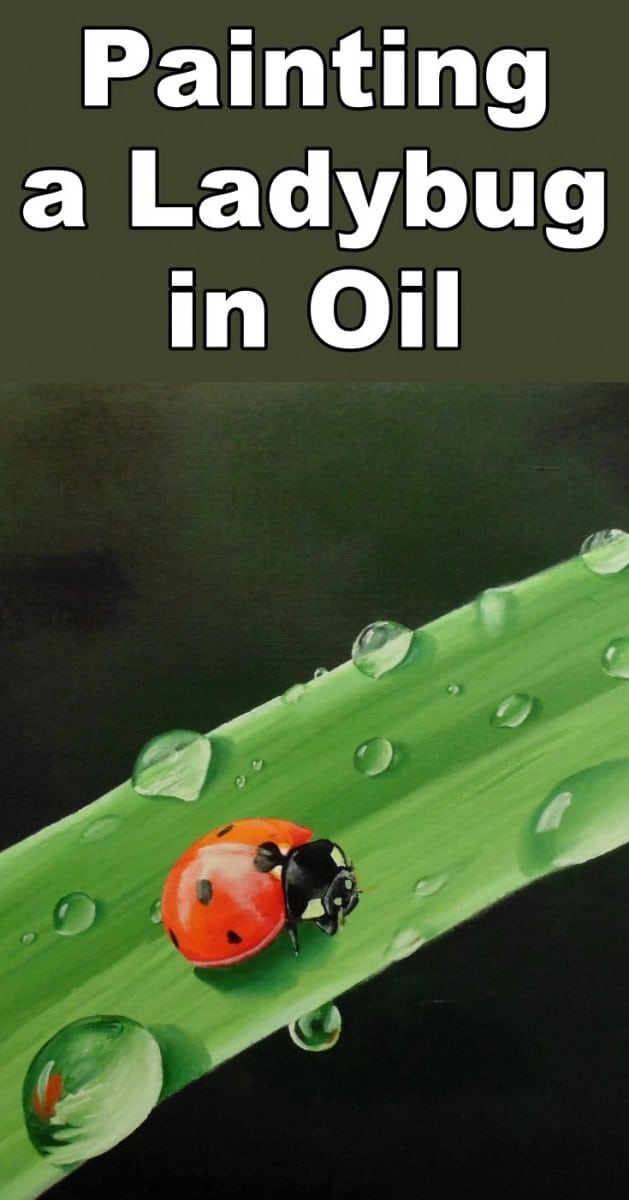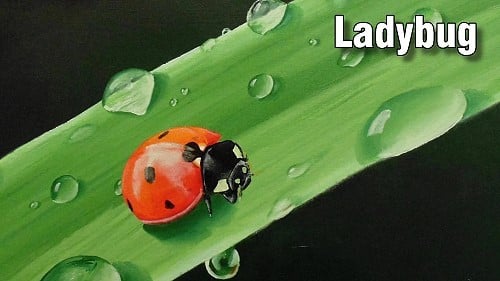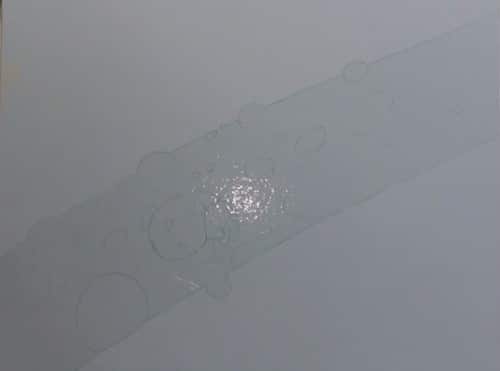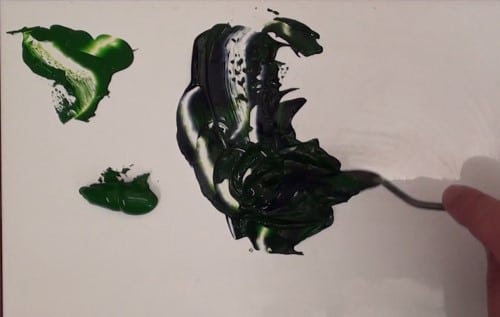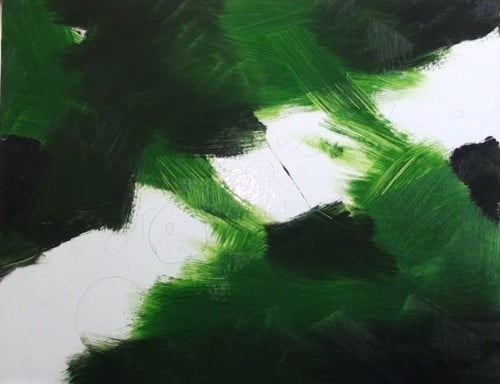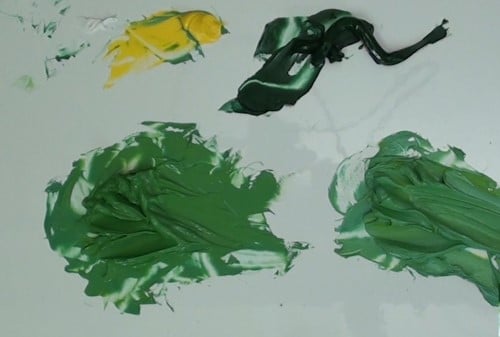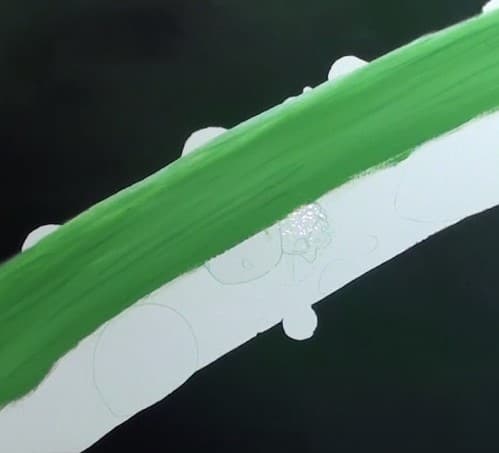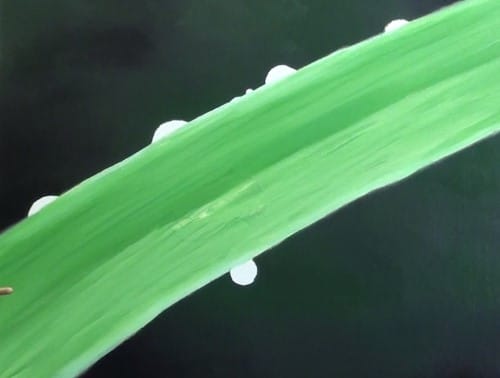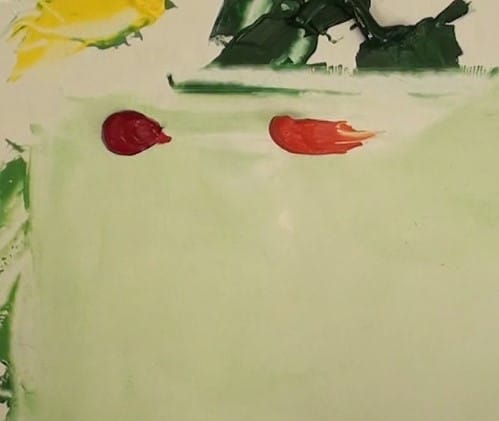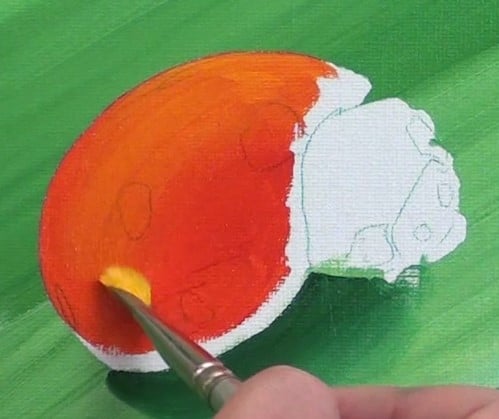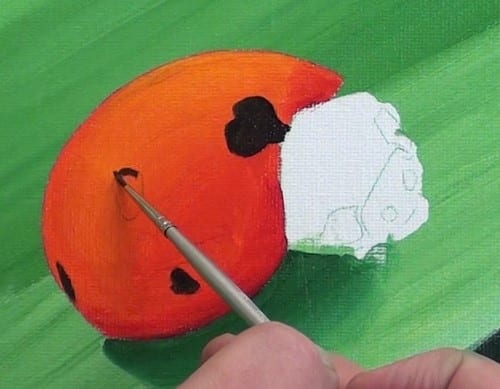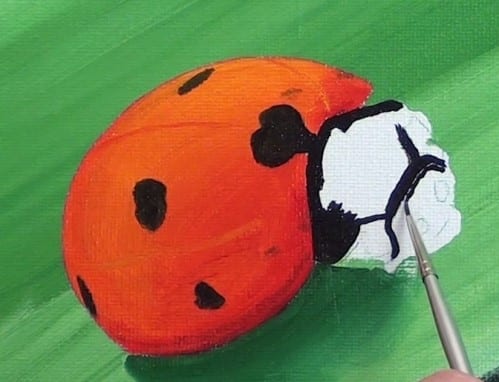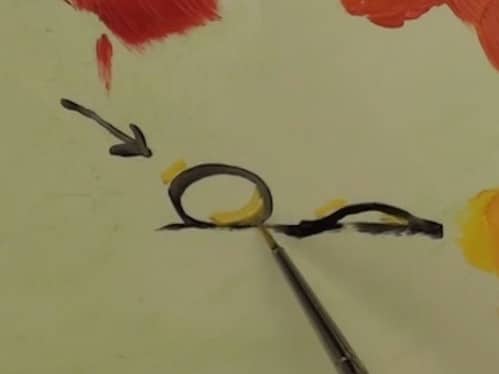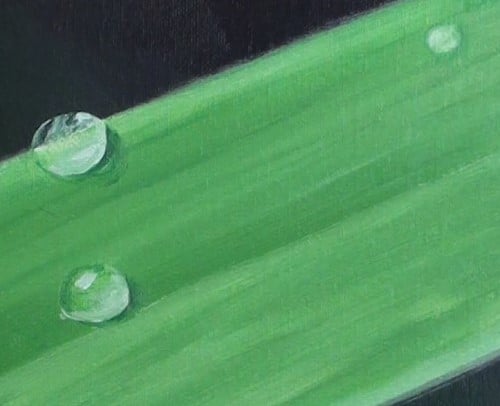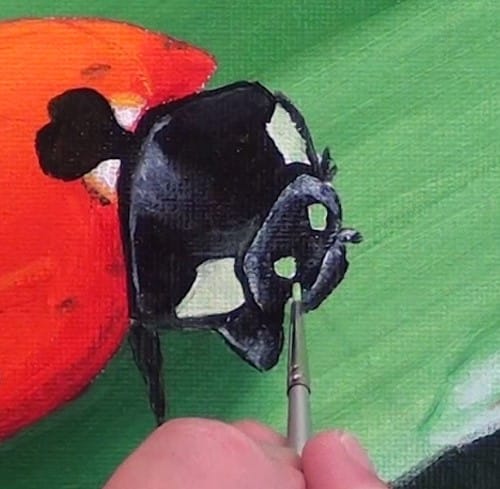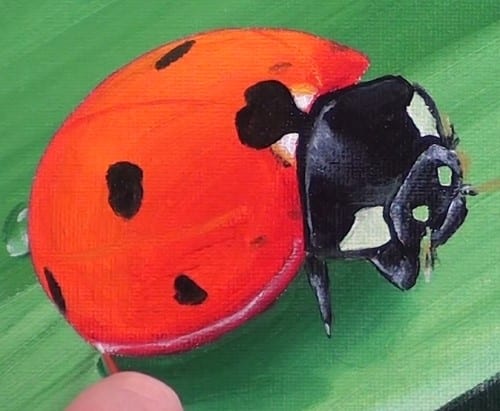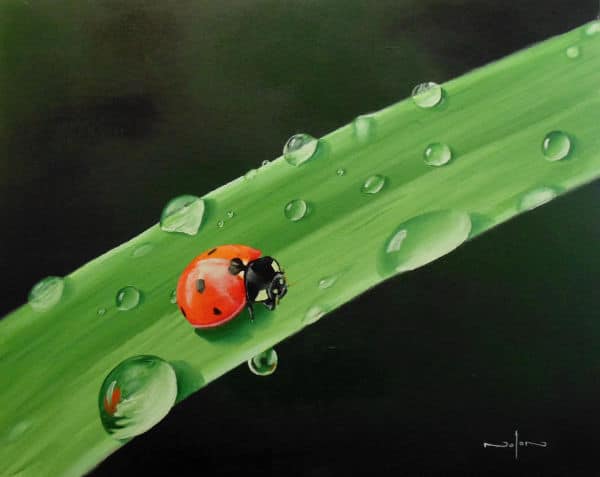Class Tutorial
Step 4 - Painting the Ladybug
Before removing the mask, determine where to paint the ladybug’s shadow. Clear away some of the paint from that area, then paint on the shadow. Be sure to make it dark close to the body, then gradually fade it out.
Clean your palette, then mix the colours you will need for the ladybug.
Before moving on to the bug’s face, add some detail to the its back along the contour lines.
Begin blocking in the bug’s face. Leave a tiny gap between the back and front of the head. Circle around the eyes, then continue filling in the black. Also leave a thin gap where the mouth is.
Paint the remainder of the head, being careful to get all the small details correctly placed. Conclude the ladybug by painting on the leg.
Begin by wiping off some of the paint in the area of each water drop. (Or allow it to dry first, then proceed with the same steps.) Mix up a thin sky colour (or any other reflected colours); then apply it lightly to the drop area. Lightly circle it with the leaf (or background) colour, making it darker on the shadowed side. Add the reflected highlight, shaping it to the contour of the drop.
Continue on with the remaining water drops. Vary the sizes and shapes.
Step 6 - Finishing the Ladybug
Add a bit of reflected leaf colour to the bug’s eyes. Lighten that colour even more and add it to the large white patches behind the eyes. Paint the white triangular shapes behind the head, adding a bit of yellow as the line fades away. Then put just a bit of shadow beyond that.
Use sky colour to make the contoured highlights at the top of the head. Highlights to the sides will have more of a leaf colour. Use the sky colour again to highlight the white line between the top of the head and the face. Continue the highlights down the face. Add highlight to the triangular shape at the side of the mouth. Add any other highlights as needed.
Click the button below to view the real time follow along version of this class:
Pin Me
